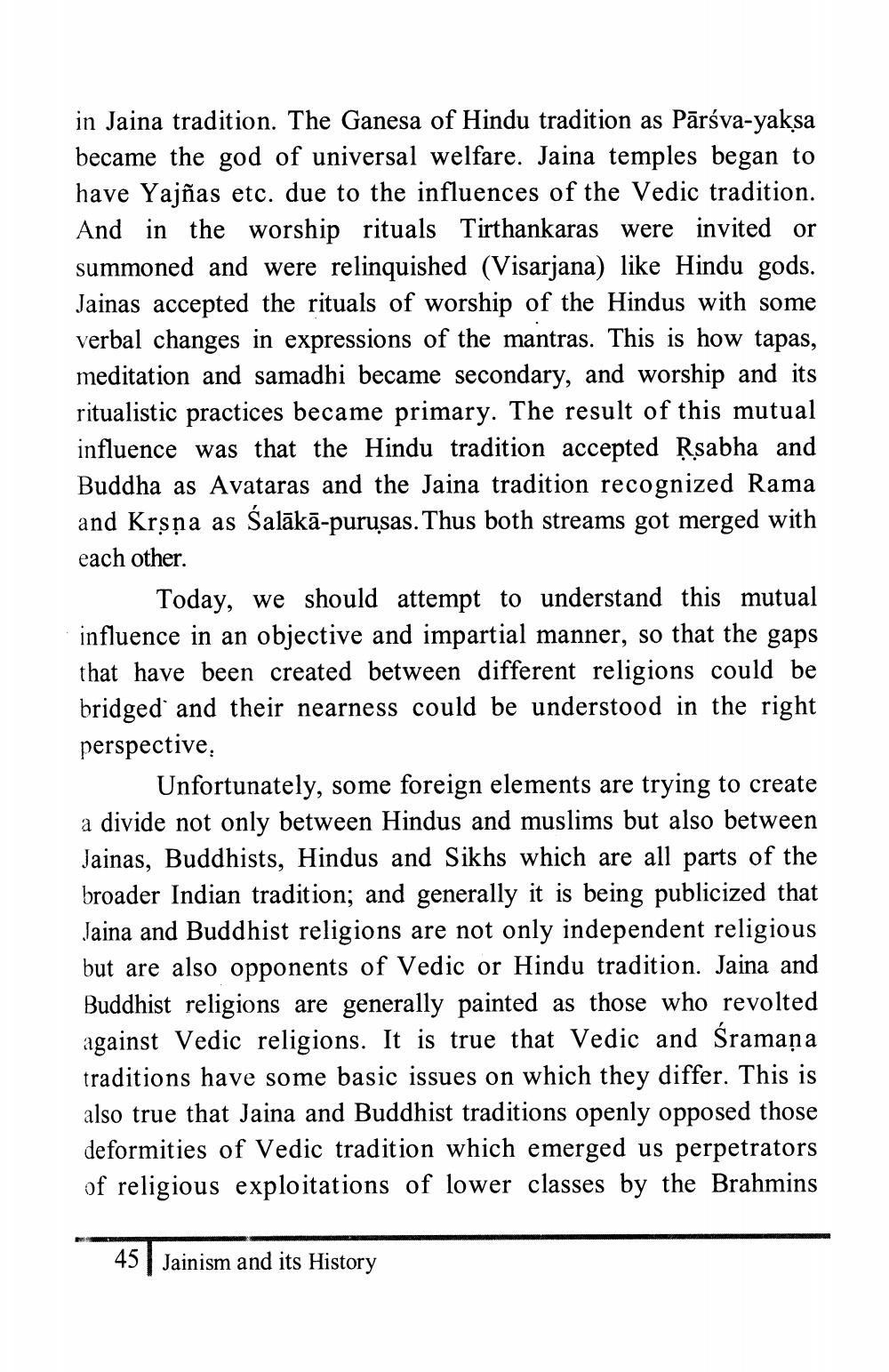________________
in Jaina tradition. The Ganesa of Hindu tradition as Pārsva-yaksa became the god of universal welfare. Jaina temples began to have Yajñas etc. due to the influences of the Vedic tradition. And in the worship rituals Tirthankaras were invited or summoned and were relinquished (Visarjana) like Hindu gods. Jainas accepted the rituals of worship of the Hindus with some verbal changes in expressions of the mantras. This is how tapas, meditation and samadhi became secondary, and worship and its ritualistic practices became primary. The result of this mutual influence was that the Hindu tradition accepted Rsabha and Buddha as Avataras and the Jaina tradition recognized Rama and Krṣṇa as Śalākā-purusas. Thus both streams got merged with each other.
Today, we should attempt to understand this mutual influence in an objective and impartial manner, so that the gaps that have been created between different religions could be bridged and their nearness could be understood in the right perspective.
Unfortunately, some foreign elements are trying to create a divide not only between Hindus and muslims but also between Jainas, Buddhists, Hindus and Sikhs which are all parts of the broader Indian tradition; and generally it is being publicized that Jaina and Buddhist religions are not only independent religious but are also opponents of Vedic or Hindu tradition. Jaina and Buddhist religions are generally painted as those who revolted against Vedic religions. It is true that Vedic and Śramaņa traditions have some basic issues on which they differ. This is also true that Jaina and Buddhist traditions openly opposed those deformities of Vedic tradition which emerged us perpetrators of religious exploitations of lower classes by the Brahmins
45 Jainism and its History




